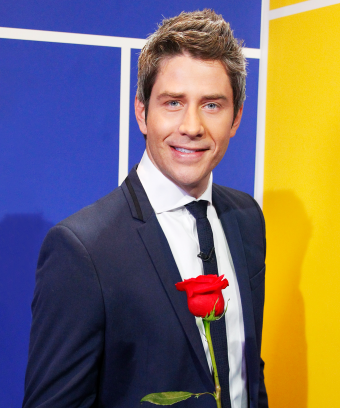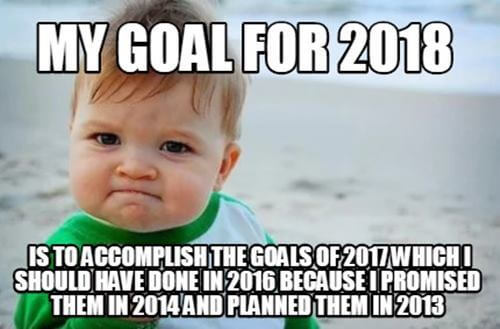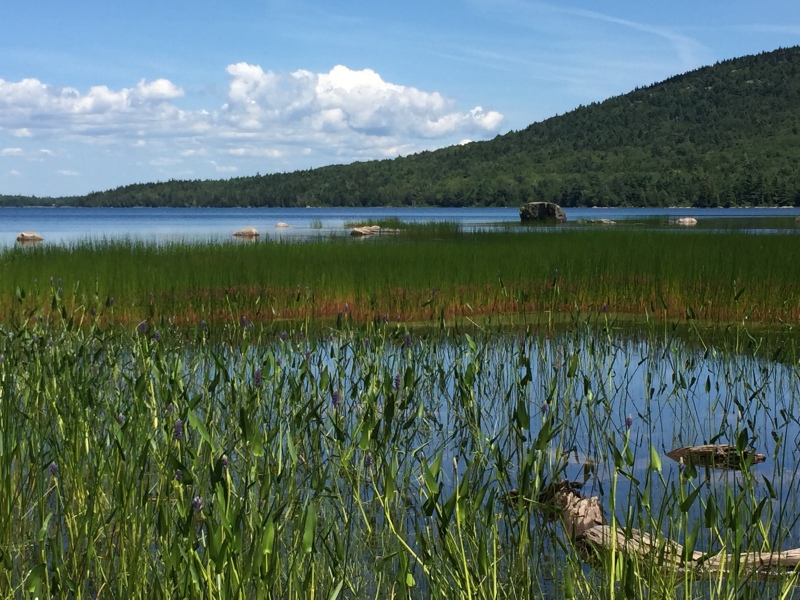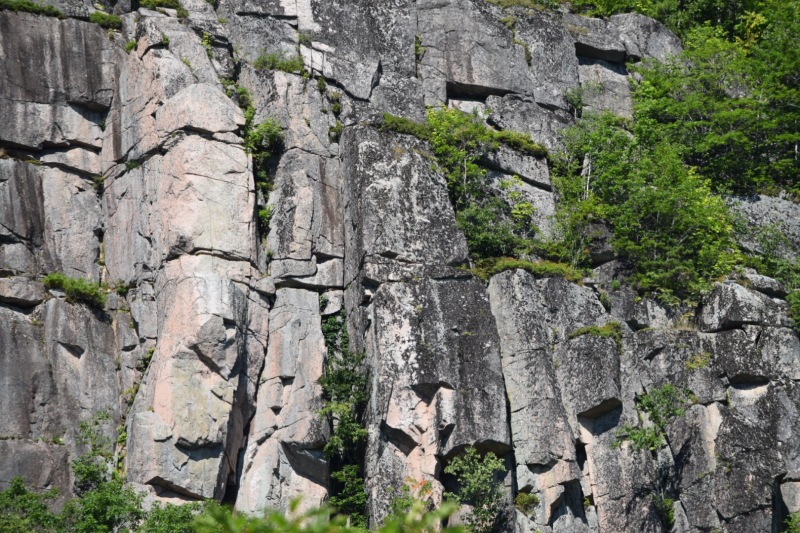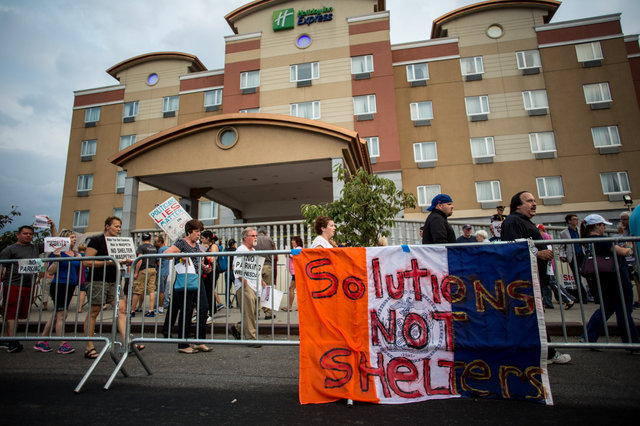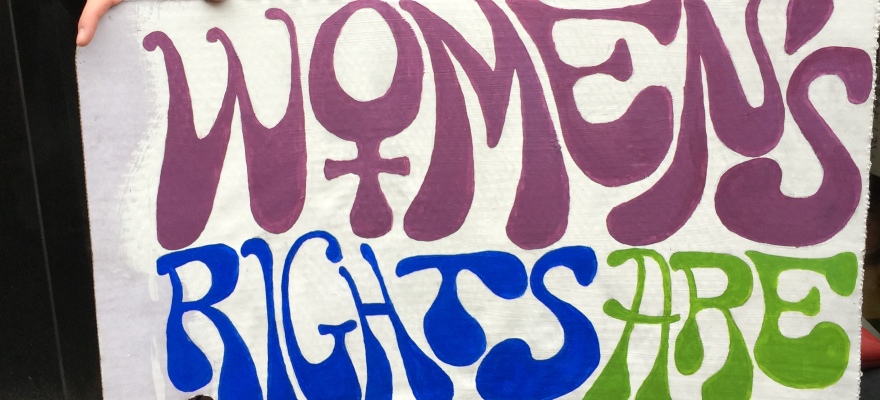Bonus points for anyone who gets the reference in the title! Hint: Game of Thrones…
—
“You know panhandling has gotten out of control when people are asking for weed.” The taxi driver, who has been rather taciturn for most of our drive so far from Bangor to Bar Harbor, Maine, points out a young, bedraggled man holding up a sign politely requesting donations in the form of marijuana. As a former resident of Berkeley, California, where the stench of pot and the sight of panhandlers was part of my daily walk to the UC Berkeley campus, this sort of thing doesn’t really faze me, but I am surprised to see it in this remote, northeastern corner of our country.
Welcome to Maine.
Views from the Cadillac North Ridge Trail.
—-
Mount Desert Island (pronounced ‘Dessert’ by local ‘Mainiacs’) is a strange, breathtaking place. It is the sixth-largest island in the United States, and is home to Acadia National Park and quaint seaport towns like Bar Harbor (properly enunciated as ‘BAR HARBAH’) and Northeast Harbor. As I gather, apart from the peak summer and early fall months when tourists descend on the lush island.
Through National Park Service signs, local bookstores and museums, I learn that I am far from the first summer visitor to set foot on this island. Rusticators, as these summer tourists to Maine were called, first came to Mount Desert Island in the 1800s and built summer cottages and hotels. Over time, the major port, Bar Harbor, became known for rowdy corralling, while the more genteel residents settled in Northeast Harbor, Southwest Harbor and other areas of the island. Today, although there are only 10,000 or so permanent residents on Mount Desert Island, more than three million tourists visited Acadia National Park in 2016. Wow! For a smaller national park, Acadia does pretty well for itself.
Photos from the summit of Cadillac Mountain.
—-
Blueberries. Blueberries. Blueberries. Unlike most folks who descend upon Maine to consume their body weight in the most infamous of crustaceans — the lobster — I have my sweet tooth set on a juicy berry.
It starts on my first day before setting out to hike on the trail. Instead of renting a car, I decide to take a risk and get by using Acadia’s Free Island Explorer Bus. It’s so nice to be able to soak in breathtaking views without having to also keep an eye on the road.
Anyway, when the friendly bus driver points out a nice blueberry patch to passengers, I immediately form a game plan. A few seconds later as I get off at the Cadillac North-Ridge trail stop, I backpedal to pick up some blueberries to enjoy after I reach the summit of Cadillac Mountain, the highest peak on Mount Desert Island (and also, fun fact: the first place in the United States to see the sunrise).
Snapshots of Bubble Pond from the Cadillac South Ridge Trail
Now, I can just hear my father saying: “Why go to Maine and pick blueberries when you can come home and pick berries for free?” Oh Dad. (For context: my father has cultivated a large, lovely orchard over the years. But picking berries in the 95 degree California heat isn’t quite as pleasant as foraging for blueberries in the cool mountain air of Maine.)
Later on in my trip, I will consume a delectable blueberry crisp topped with ice cream, a dangerously intoxicating blueberry vodka drink, and a blueberry soaker (a carbonated blueberry beverage similar in texture to a root beer soda). Needless to say, I leave Maine satisfied with fruity delights.
I set off on the Cadillac North Ridge trail with fresh berries, my camera, tripod, clear skies, and the sun shining overhead. As it’s a moderate trail, I’m able to ascend without too much difficulty, and reaped the rewards. I set my camera up on the tripod, and click away at panoramic views of blue skies, majestic ponds, boats, green tree lines and rocky mountains.
After lunching on the summit, I make the foolish decision to set off on a different path down the mountain from the one I had climbed. I’m normally a moderate level trail hiker, so I pause momentarily when I see the ‘difficult’ marker on the trail. But this cute family with kids is climbing up the mountain, and I’m like, if they can do it, why not me?
WRONG. Going down a steep cliff side climb teeming with unstable rocks is way harder than going up. Sliding down a rock, I even tear a hole in the seam of my (admittedly cheap) pants, and am grateful that there was no one on the trail to see my undergarments peeking out! But after an hour and half went by without seeing another hiker on the trail, I started sweating bullets. Fortunately, the trail has markers to guide hikers. These markers are called cairns, which are really just piles of rock, but they really can make the difference between life and death.
But oh, are the views worth it! Tip: wear sturdy shoes — hiking shoes, preferably. And yes, I do make it off the trail alive to catch the last bus back to Bar Harbor and write this blog post.
My pants are still ripped, though.
—
I feel a lot of nostalgia and longing for California when I was here. Acadia combines a lot of the varied terrain of Northern California that I love (the still blue waters and forests of Lake Tahoe, the rocky cliffs and chilly beaches of Point Reyes…).
The next few days after that initial hike are replete with so many wonderful memories — mostly of achy joints…just kidding…well, semi-kidding. It’s hard to encapsulate everything into a neat summary, but I’ll do my best. I am enthralled by the relatively moderate hike up the tiny Gorham Mountain (elevation 525 ft), which offers lovely panoramic views of Acadia National Park, including of Sand Beach (where I stop for a moment to soak my aching feet in the chilly water and photograph a posing crab).
Taken from atop Gorham Mountain and Cadillac Mountain.
Views from Sand Beach and Gorham Mountain.
The Bubble Rock trail features a large boulder that is seemingly precariously balancing on a precipice, making for fun photo-ops. When I ascend to the summit of the Bubble Rock trail head, I’m rewarded with the most scenic view of forests surrounding by ponds surrounded by the open ocean and numerous little islets.
Sights from the Bubble Rock trail.
I make mad dashes through verdant forests filled with delicately spongy moss and vibrant lichen, only to finally reach the ethereal Eagle Lake. Seriously, I felt like I was walking through a Hayao Miyazaki film half the time I was in the park. Beyond surreal.
Views from Eagle Lake and Bubble Rock.
Somewhere in between, I find time for a jaunt on the local mail ferry to the Cranberry Isles, which are smaller islands just off the coast of Mount Desert Island. The mail ferry is the only way to get items shipped to and from these little islands, and boy does the ferry carry everything! Including a full-sized refrigerator. Numerous boats (with some pretty memorable names) dock in the small harbors as we land at the two major islands (Great Cranberry Island and Little Cranberry Island) here. Along the way, we pass by the iconic lighthouse on Bear Island. Can’t stop by Maine without seeing a lighthouse.

Mainly, I bask in the quiet, rustic nature of the islands, walk along the rocky seashores strewn with the wreckage of lobster tails — like a gruesome battlefield — and marvel at not only the piles of lobster tackle boxes, but also the small town nature of the communities here. I wonder what it must be like for a kid to grow up and go to school on a small island where everyone knows everybody else, when you’re here long into the chilly winter months when all the summer rusticators are up and gone. The islands are beautiful, particularly a stretch along the rock beach at Great Cranberry Island which ends in the picturesque Coast Guard station.
—
Another day, another lighthouse: after missing my cruise and rescheduling for tomorrow, I spontaneously hop on a new Island Explorer bus route and make my way past stately homes in Southwest Harbor, and then hope off the bus to check out the Bass Harbor lighthouse. Pesky mosquitoes and the the ever-looming presence of the U.S. Department of Homeland Security (I guess you can’t escape it, even in remote Maine) aside, the rocky cliffs by the lighthouse are are a stunning place to sit back and enjoy the view while gamboling in the tide pools below.
And although most of my breakfasts and lunches consist of trail snacks and mini croissants, I do stop for a regal lunch at Jordan Pond House, a must-visit spot for any visitor to Acadia National Park (but make reservations in advance if you go!). Its star item is the popover, a delicate pastry that is best described as a crossover between a roll and a croissant. You crack it open to its fluffy core and slather it with fruit preserves and butter. When doused down with a cold blueberry lemonade, it’s a damn near perfect summertime meal.
Finally learning how to use the self-timer on my camera, I take some selfies on the rocky red outcroppings near Thunder Hole, a geographic wonder in which you can see this cavern flush and drain with water at alarmingly fast rates. I don’t hear any thunderous noises, but you maybe you wil!
Thunder Hole
And although I don’t spot much wildlife, I do take in some remarkable birds. One of the most memorable is the peregrine falcon, whose nesting spot has actually shut down one of the park’s more popular trails. Luckily, some rangers are kind enough to point out the flying eagle soaring over the cliff side, and I get a neat view through their telescope.
The coolest avian species I encountered was probably the puffin though. For those of you Iceland buffs, this bird will be familiar, but it was the first time I had ever seen it. It is remarkably smaller than I expected, and it possesses a largely black body and vivid orange beak. I just wish I could have gotten closer to it, as I can only spot it through my telephoto lens while on a cruise around Acadia Park.
Puffins, falcons and other birds.
I also catch a glimpse (but no photo, sadly) of the minke whale, a remarkably fast critter that never bobs its head up for more than a few seconds, but whose circular ‘footprint’ lingers behind in the water for some time afterward. All in all, I would highly recommend going on a cruise if you come to Acadia (again, book in advance, but be aware that they do cancel if the weather gets too bad), but I would suggest you do it on a day when you can be assured of relatively decent weather. On the day I went, it was pouring rain half the time, and the other half, while I was scouting for whales atop the ship, the wind threatened to rip my hood in half. It was an experience, to say the least!
More views from the cruise ship, primarily of islands off the coast of Mount Desert.
Actually, the day that I go on the cruise is the same day that I’m checking out of my sparse motel. As I have no car, I have to haul my luggage with me onto the boat. On my way in, one crew member just guffaws and says: “People don’t usually bring their entire hotel with them…” On the way out, he grins and notes sardonically: “Leaving so soon?”
—
You know, although the natural beauty of Acadia is clearly the highlight of the trip, some of the most poignant memories came from those that I shared with others.
I meet a family from South Carolina after ascending to the top of the Bubble Rock trail, and while enjoying the views, we chatted about the son’s work on a golf course in Hilton Head, South Carolina. When I mention I’m a journalist, the son replies: “Well, you can write about this” and gestures to beautiful scenery around us.
A jovial professor from DC (my former abode before New York) who teaches theater fills me in on all the latest political mishaps in the White House (which I had until then been avoiding with some degree of success on the trails).
A single woman who I meet on the ferry back from the Cranberry Isles tells me about how she was cleaning up the home of her elderly parents on Little Cranberry Island, and how she worries about the job prospects for her daughter, who is not much older than me and studies a form of creative writing. She recalls how she once worked for a Republican congressman in Maine, which she could no more see doing in today’s political climate than she could imagine jumping off the ferry and swimming back to the island.
A woman who hawks sports memorabilia spends a good twenty minutes chatting with me about the San Francisco Giants’ recent wins in the World Series and — after learning about my current and former professions — about the need for credible journalists and also the current dysfunction on Capitol Hill.
And of course, plenty of friendly locals, bus drivers and other tourists give me ample advice and friendly smiles.
The only thing I’d remark on is that I wish I saw more people of color in Acadia — the rate of attendance of people of color in the U.S. National Park System could definitely use some work, and I saw especially few in Acadia — but I hope as more people like myself tell their stories of their wonderful experiences, this will change.
People marvel when I tell tell them I’m traveling by myself, but really, I’m never alone.
—-
After several hours of sitting in the Bar Harbor airport because apparently there is water on the runway at Logan International (which is apparently a load of bull, according to a fellow passenger who happens to be a pilot, but I digress), I finally make it to Boston. Apart from a conference a few months back, I haven’t been to Boston since I was a kid. My opinions of the city have been formed primarily through repeat viewings of Martin Scorsese’s The Departed, which is a totally accurate depiction of the city, obviously.
Our close family friends, Prakash Uncle, Saila Aunty and their son, Neel, pick me up at the airport and we head to Boston’s Chinatown for some delicious hot pot. Perhaps the only hot pot I’ve tried…ever? I feel wildly uncultured, but it makes a great first impression. I love dropping the slices of meat and veggies into the bubbling broth and having insta-made soup thirty seconds later.
We head to Uncle and Aunty’s home in a town some twenty minutes outside of Boston, which, apparently, is where Paul Revere held some sort of clandestine revolutionary meeting? I’m like, cool, but this is Boston, where every single building enormous historical significance. First town meeting hall, secret rendezvous spots in seventeenth-century churches…if you told me the first port-a-potty had been built in Boston, I would probably believe you.
Hanging out with Saila Aunty and Prakash Uncle in front of their home.
The next day, after a meal of homemade upma (a delightful South Indian breakfast dish), Uncle kindly plays tour guide and we drive around the downtown Boston, dodging parking tickets and generally having a blast.
You can’t see Boston without checking out the museum dedicated to the Boston Tea Party. I think we’re all fairly well versed on the incident (blah blah taxation without representation, screw King George III, etc etc), so I’ll skip the SparkNotes brief, but as a history nerd, Boston is a pretty exciting city! Tributes to Paul Revere are everywhere. Note to self: don’t diss Sam Adams — the beer, not the revolutionary hero — when you return to Boston. Bostonians do NOT approve.
Contrary to popular belief, Revere did not actually utter the famous quote “The British are coming” because at the time, the revolutionaries were still technically British, so that’d be like running through the streets of Boston today chanting ‘The Americans are coming!” There are ladies dressed in traditional colonial ware and , which is a little tacky, but I’ll forgive it. There’s a replica ship which I admire from afar, and a lot of ‘Don’t Tread on Me’ T-shirts in the gift shop.
Next, we hit Boston’s historic North End, a hodgepodge of Italian and Irish-American communities. Irish and Italian flags sail from the doorsteps. And cannolis — that delectable Italian fried dough filled with creamy goodness! Can’t forget the cannolis from the tourist trap Mike’s Pastry, best consumed with some Italian espresso from a shop down the streets.
Then it’s off to various other historic sites from the famous Freedom Trail in Boston, including the circle marking where the Boston Massacre occurred, the old State House of the legislature, the new State House of the legislature, the original bar that gave rise to the TV show Cheers, the first public garden in the U.S, and a cemetery where Paul Revere and some other less famous dudes are buried (with eerie skull and bones engraved into their tombstones…what’s up with that?). Along the way, my Indian-made slipper breaks in half, and I hobble my way to a retail store where they sell sandals for the ungodly price of $4, which makes me seriously concerned for their labor standards.


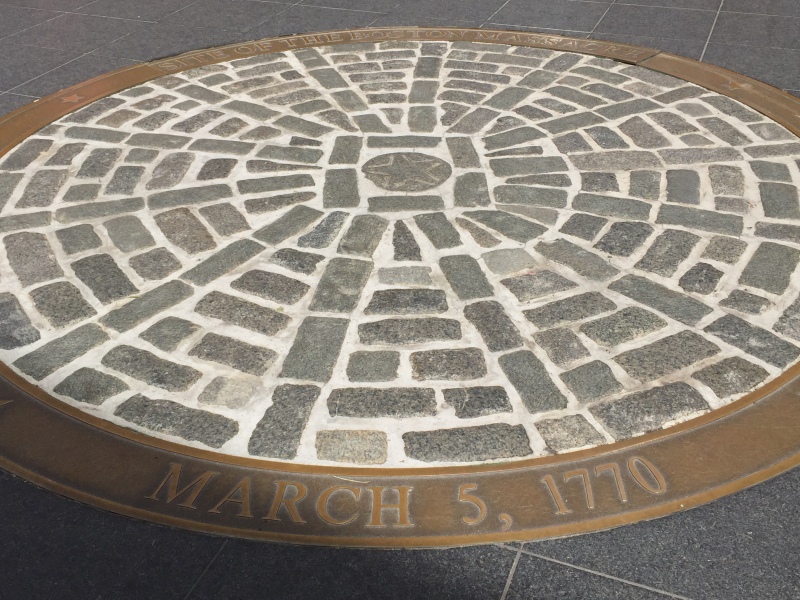

And last, but certainly not least, we make it to THE iconic Boston institution: Fenway Park. The oldest of baseball stadiums in the country and an iconic American institution. Seats above the park’s Green Monster section — a 37-foot left field wall where home run balls regularly scatter — can go for up to $500. Wow!
The Red Sox: such a weird name, right? Curious about the history, I wound up Googling, and found this from Encyclopedia Britannica: “The team officially took the name Boston Red Sox (“BoSox” or “Sox” for short) in 1908, adapting it from the Boston Red Stockings, the original name of Boston’s first professional baseball team (now the Atlanta Braves).” Huh, it takes gall to name a major league baseball team after a pair of undergarments.
Anyway, the Red Sox end up miserably losing that game to Kansas City, but as one of those fair weather baseball fans, baseball games are for me less about the outcome and more about the atmosphere. I can’t get enough of the the ballpark franks, the camaraderie, and the shouts of ‘Peanuts, get yer peanuts!’
The next day, with Aunty accompanying us, Uncle and I head off to visit the Old North Church. The Old North Church is home to the storied steeple where a lantern was hung to let the revolutionaries know of the advance of the British Redcoats. The white pews look like office cubicles rather than the dour benches you see in most churches, and there’s a staircase leading to a stand several feet above the pews where the pastor presumably stands. This might be on of the coolest churches I’ve been to in the states (though Washington DC’s National Cathedral probably takes the #1 spot).
After touring the church, we watch a lady outfitted in colonial-era wear demonstrate how to make chocolate the traditional way by combining cacao beans with a bevy of colorful spices instead of the artificial sweeteners we use today. She strains the chocolate through a vessel into liquid form, which we promptly drink. Aunty is thrilled, and records the video, hoping to replicate it someday.
A replica chocolate maker’s work table along with scenes from Boston’s Old North Church. That’s a very old bust of George Washington!
Outside the chocolate shop near a large statue of Paul Revere , we come upon an older woman with a short, gray bob playing a glass harmonica. The glass harmonica was originally invented by (guess who?) Benjamin Franklin (who else?). As best as I can tell, in order to make music, one person must spin a handle at the end of the device, while the musician runs their fingers along various curves and rims of the harmonica.
Upon seeing my darker skin, the woman asks: “Where are you from?” Ahh, the dreaded question. “New York, but really California.” “No exotic heritage?” We concede that we are of Indian descent. She leaps at the chance to play a lovely melody, which I vaguely recognize as Jana Gana Mana, the Indian national anthem. The lady chides me for not singing along. I confess that I don’t know the words to the Indian national anthem. Whoops. I guess all those years as a South Asian Studies and Political Science double major really failed me, huh? This all seems very bizarre and random, but I’ll go with it, because, hey: ‘When in Boston’…

A replica of Benjamin Franklin’s glass harmonica.
Afterwards, we walk by the historic USS Constitution (I don’t really know anything at about this, but what a cool-looking boat!) and head uptown to Bunker Hill. Bunker Hill is the site of a famous battle between the British Redcoats and the ragtag New England forces. Although the British took the battlefield, they suffered a surprising number of losses, and the battle demonstrated the ability of the fledgling revolutionary soldiers to hold their own against the British army. A large obelisk monument stands there today to commemorate the battle.
And then, it’s off to visit the esteemed MIT and Harvard. I can’t help but feel like a doe-eyed seventeen-year-old attending a college tour and dreaming of the incredible things that I’ll do one day. (I never attended an Ivy League, for the record. I’m very happy with my alma mater, UC Berkeley. GO BEARS!)
Perhaps it’s a byproduct of being older, but I no longer stand in awe of these eminent universities, though I do appreciate the lovely architecture and design of Harvard Square.
We cap off the evening with a lovely meal at one of the Indian restaurants that Uncle owns in a town near Boston, and start by sampling some of the Chicken 65 (a classic spicy chicken appetizer), I’m taken back to some good old memories of when we would order Chicken 65 from the Eagle Bar, a local restaurant not too far from my dad’s hometown in the Indian state of Andhra Pradesh.
The next day, I bid a warm farewell to Uncle and Aunty after numerous photos in their beautiful home, and schlepp onto the bus that will take me back to New York.
On the way to Maine, I had taken two buses and a taxi to get to Bar Harbor. I could have taken a train one leg of the way, but I decided not to. In addition to saving a few bucks, I’ve always preferred riding the bus to the train. I feel like I really see a new side to my country while riding on the bus, whether it’s in witnessing the breathtaking greenery of Connecticut, or in striking up a friendly conversation with my seatmate.
That being said: screw Megabus. 3:45 estimated arrival time — no way. We pull into our stopping point in New York at 5:00 pm. Next time, I’m taking Greyhound.
—
Back at that Red Sox game in Fenway Park, a blonde singer takes to the microphone to sing one of the most quintessential American songs:
“Oh, beautiful for spacious skies,
For amber waves of grain,
For purple mountain majesties
Above the fruited plain!”
Katherine Lee Bates did not have Maine in mind when she penned “America the Beautiful” in the 1890s. And yet, as I watched purple and pink hues descend over ‘spacious skies’ and the Sommes Sound and plucked wild blueberries on steep mountainous climbs, for the first time, I understood the earthly beauty behind the lyrics that I had sung so many times as a schoolgirl.




